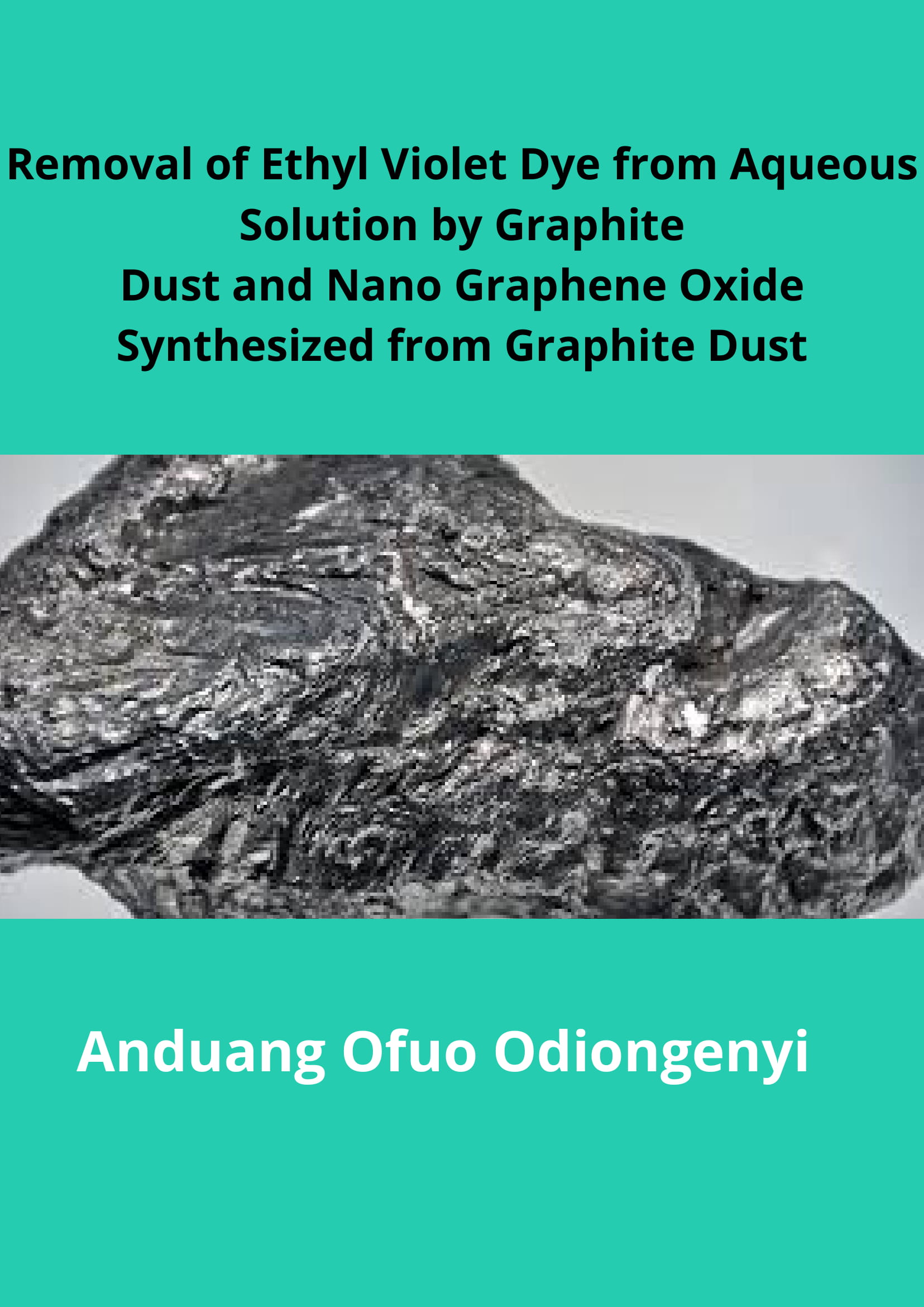Removal of Ethyl Violet Dye from Aqueous Solution by Graphite Dust and Nano Graphene Oxide Synthesized from Graphite Dust
Keywords:
Decontamination, colour, adsorption, graphite dust, nano graphene oxideAbstract
Communication in Physical Sciences 2019. 4(2): 103-109
Author: Anduang Ofuo Odiongenyi
Nano graphene oxide was synthesized from graphite dust using Hummer’s method. The graphite dust and the synthesized nano graphene oxide were used as an adsorbent to remove ethyl violet dye from aqueous solution. The equilibrium amount of dye adsorbed by graphite dust at 303, 313, 323 and 333 K ranged from 5.303 to 37.236, 1.551 to 22.779, 1.058 to 26.026 and from 1.298 to 22.849 mg/g respectively. For nano graphene dust, the equilibrium amount ranged from 1.904 to 41.467, 1.834 to 55.712, 1.058 to 26.023 and from 1.298 to 22.849 mg/g at 303, 313, 323 and 333 K respectively. Nano graphene oxide exhibited better performance than graphite dust except at 333 K. The adsorption of ethyl violet occurred through a physical adsorption mechanism at 303 K but at higher temperature, chemisorption dominated, Langmuir isotherm best described the adsorption of the dye. The theoretical adsorption capacity of the
adsorbent increased with temperature. Nano graphene oxide displayed better surface modification properties than graphite dust.

Downloads
Published
Issue
Section
Most read articles by the same author(s)
- Anduang Ofuo Odiongenyi, Influence of Sol Gel Conversion on the Adsorption Capacity of Crab Shell for the Removal of Crystal Violet from Aqueous Solution , Communication In Physical Sciences: Vol. 8 No. 1 (2022): VOLUME 8 ISSUE 1
- Anduang Ofuo Odiongenyi, Adsorption Efficiency of Scotch Bonnet Shells as a Precursor for Calcium Oxide Nanoparticles and an Adsorbent for the Removal of Amoxicillin from Aqueous Solution , Communication In Physical Sciences: Vol. 9 No. 3 (2023): VOLUME 9 ISSUE 3
Similar Articles
- Nyeneime William Akpanudo, Ojeyemi Matthew Olabemiwo, Pore Parameters Analysis of Echinochloa pyramidalis leaf Dopped Silver Nanoparticles , Communication In Physical Sciences: Vol. 11 No. 4 (2024): VOLUME 11 ISSUE 4
- Yusuf James, Yisa Jonathan, Jimoh Oladejo Tijani, Razak Bolakale Salau, Elijah Yanda Shaba , Mr. , Communication In Physical Sciences: Vol. 12 No. 4 (2025): VOLUME1 2 ISSUE 4
- Chisom Friday, Okenwa U. Igwe, Jude C. Nnaji, Nanoremediation Research in Nigeria: A Review , Communication In Physical Sciences: Vol. 9 No. 1 (2023): VOLUME 9 ISSUE 1
- Fabian James Umoren, Mfon Clement Utin, Resource Recovery from Maize Wastes; Synthesis and Characterization of Silicon Oxide Nanoparticles , Communication In Physical Sciences: Vol. 11 No. 3 (2024): VOLUME 11 ISSUE 3
- S.C Ezugwu, Structural and Optical Properties of Pva Capped Nickel Oxide Thin Films Prepared by Chemical Bath Deposition , Communication In Physical Sciences: Vol. 1 No. 1 (2010): VOLUME 1 ISSUE 1
- Ifeanyi E. Otuokere, K. K. Igwe, Ni(II) complex of (3,3-dimethyl-7-oxo-6-(2-Phenylacetamido)-4-thia1-Azabicyclo[3.2.0]heptane-2-carboxylic acid : Synthesis, characterization and antibacterial activities , Communication In Physical Sciences: Vol. 5 No. 1 (2020): VOLUME 5 ISSUE 1
- Elizabeth Chinyere Nwaokorongwu , Greatman Mkpuruoma Onwunyiriuwa, Ajike Eziyi Emea , Heteroatom-Doped Carbon Allotropes in Corrosion Protection , Communication In Physical Sciences: Vol. 10 No. 1 (2023): VOLUME 10 ISSUE 1
- Uduak Bassey Essien, Magdalene E. Ikpi, Alexander I Ikeuba, Nsikak Bassey Essien, Experimental and Computational Chemistry Investigations of Tartaric acid as a Green Corrosion Inhibitor for API 5L X 52 Carbon Steel in 0.5 M HCl , Communication In Physical Sciences: Vol. 7 No. 4 (2021): VOLUME 7 ISSUE 4
- M. T. Bisiriyu, Fractionation and Characterization of Asphaltenic and Resinous Fractions of Natural Bitumen , Communication In Physical Sciences: Vol. 5 No. 2 (2020): VOLUME 5 ISSUE 2
- K. G. Ta'awu, M. C. Ekanem, A. Mairo, P. G. Udofia, Sensory and market attributes of wheat-Musa. spp-soybean (WPS) flour composite bread , Communication In Physical Sciences: Vol. 5 No. 2 (2020): VOLUME 5 ISSUE 2
You may also start an advanced similarity search for this article.



